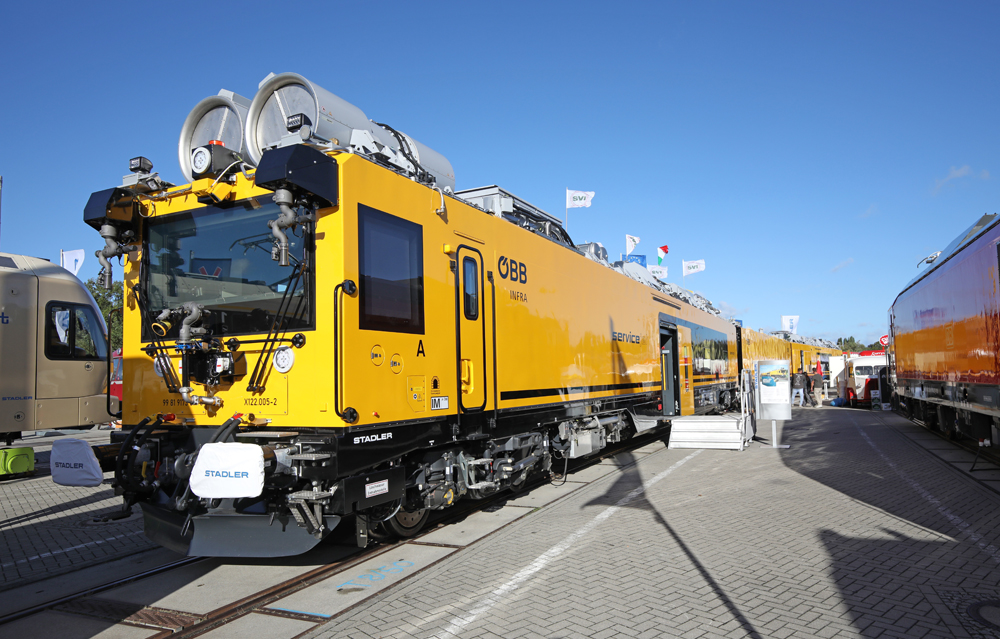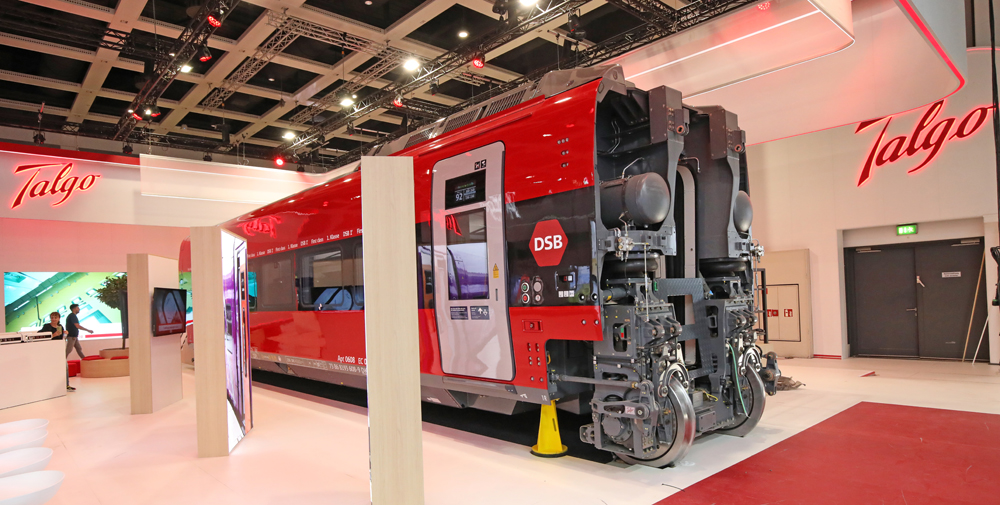
BERLIN — The global InnoTrans trade fair closed Friday evening, and the organizers have reported record numbers of visitors: at least 170,000 from 133 countries, according to provisional figures, visiting the 2940 exhibitors from 59 countries.
Organizers report that about 600 new exhibitors took part – some representing countries never previously never represented, such as Morocco (whose national rail company had a significant presence) , Malaysia, Indonesia and South Africa.
As in 2022, there were no exhibitors from Russia and Belarus, following international economic sanctions imposed after the Russian invasion of Ukraine in 2022. However, unlike 2022, Ukrainian Railways (UZ) did have a full scale exhibition stand – mainly to promote rail freight links with Europe for Ukrainian exports. The stand also featured a small display of signage from Ukrainian railway stations damaged in Russian attacks and highlighted the grim statistics of the war for UZ employees, with 707 killed and 1,982 injured by Russian attacks since March 2022.
The show saw new trains being publicly presented for the first time and multiple announcements of new future orders; this report will look at new equipment not featured in previous articles. Still to come is a News Wire report on new technology from the show, including next-generation traction and digital automation from leading manufacturers such as Wabtec, Progress Rail, Siemens, Hyundai Rotem, and Stadler as well as smaller companies.
Major builders show new passenger equipment
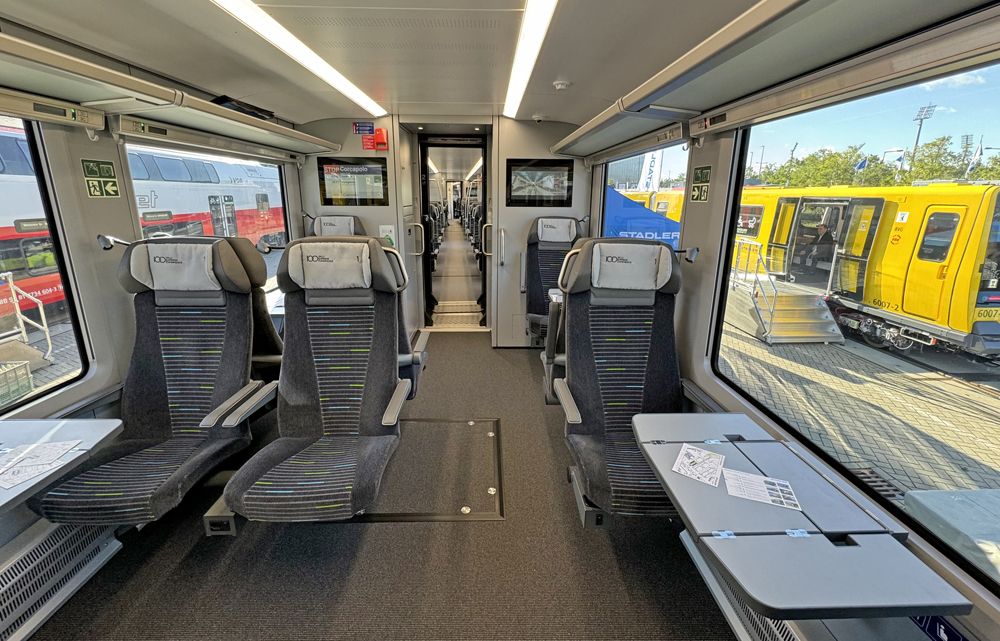
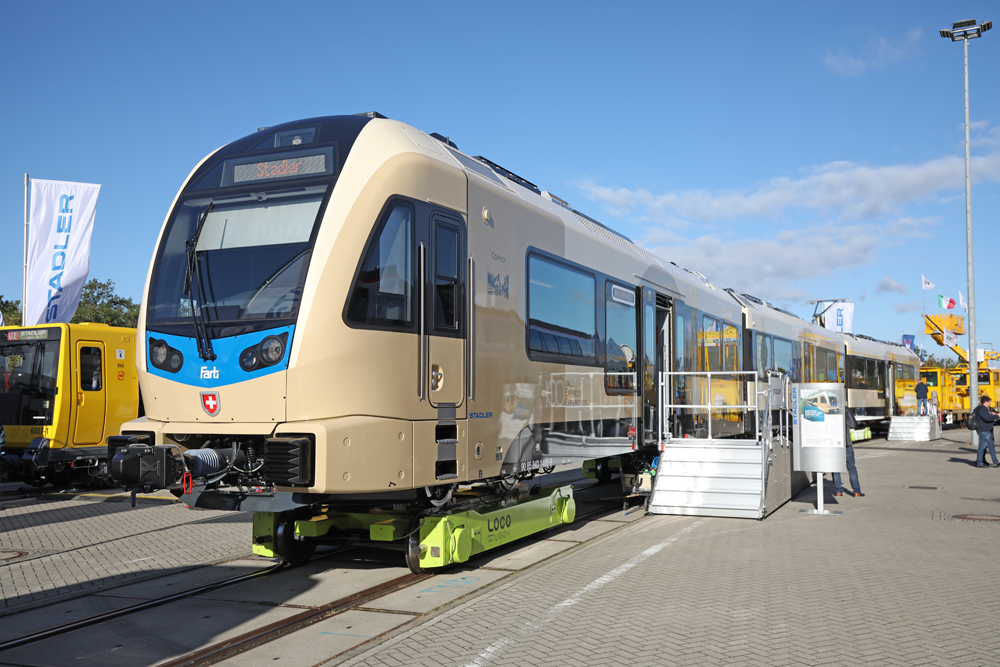
One of the most impressive train interiors — with equipment that looks smart on the outside, too — belonged to the new electric multiple-unit trainset for the meter-gauge Swiss-Italian Vigezzina-Centovalli Railway. Stadler presented the first of 12 new EMUs for the joint operators of the railway between Locarno, Switzerland, and Domodossola, Italy — Switzerland’s Ferrovie Autolinee Regionali Ticinesi (FART) and Italian operator Società subalpina di imprese ferroviarie (SSIF). The new trains feature vehicles which are all powered on one truck and designed to be operated flexibly as two-, three- or four-car units. Because the yard at the Berlin Messe trade fair is all standard gauge, the train was moved to Berlin and exhibited on “rail buggy” translator trucks from European train movement specialist Rail Adventure.
Stadler also presented its latest Flirt Akku BEMU at InnoTrans (Akku is German for battery). The two-car train is one of 44 for use in the Rhineland Palatinate region of western Germany beginning in December 2025. Alstom also displayed a new train model designed for use in Germany: the Coradia Max, which features some bilevel cars and some single-deck ones. The train displayed came from the first fleet due in service later in 2024 for service around Bremen in northern Germany; that fleet is delayed due to production/testing problems.
Spanish firm Talgo had a brand-new car from its order for 16 trainsets for Danish national rail company DSB on display — unusually, the car for the 125-mph equipment was inside an exhibit hall, not outside on the display tracks. The company explained that thanks to the lightweight construction of its cars they can be shown indoors as they are not as heavy as most other rail vehicles.
Freight and maintenance equipment also featured
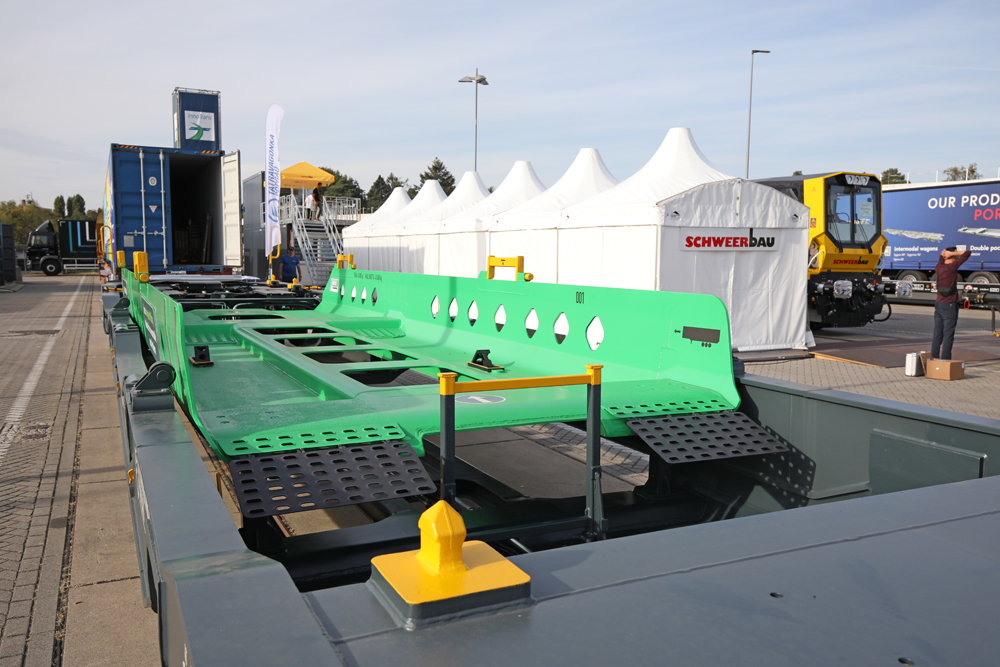
While passenger equipment often dominates InnoTrans media coverage, there are far more freight cars and maintenance-of-way vehicles on display, from a wider variety of manufacturers. Slovak freight car manufacturer Tatravagónka Poprad exhibited newly designed intermodal wagons designed to accommodate truck semi-trailers that are craned onboard in specially designed trays; this allows rail movement of lighter-weight trailers that otherwise cannot be craned, as they simply cannot take the stresses involved, and offers an option at freight terminals where space is limited. Many of the freight cars displayed featured the new European digital couplers fitted; while agreement has been reached on technical standards for these, there remains uncertainty about financing implementation of the new system.
Stadler, which in recent years seems to make sure it has the most trains displayed at InnoTrans, was also exhibiting its new firefighting and high-speed-line rescue train which it is building for Austrian national rail operator ÖBB. The Austrian company has 18 of these new Tunnel Rettungs Züge (TRZ), or tunnel rescue trains, on order at a cost of €230 million ($257 million). Following ÖBB’s use of consumer branding using English-language words (e.g. Railjet, Nightjet and Cityjet for passenger services), the company is branding its new rescue units Servicejet, which is prominently displayed on the side of the units.
ÖBB has ordered the trains partly to replace older tunnel rescue trains formed of former passenger vehicles, but also because the number of long tunnels on the Austrian network is scheduled to increase substantially in the next decade, as three new base tunnels under the Alps (the Koralm, Semmering, and Brenner tunnels) come into service. Each three car Servicejet comprises two powered driving vehicles (working from overhead power, batteries, or diesel, or a combination of these), They are equipped with a firefighting water cannon, searchlights, and thermal-imaging cameras, with high-pressure fans to dissipate heat and smoke fitted to the cab roof at wach end. Within the unit are water tanks to supply fire fighters who can switch from water to foam using onboard foaming chemicals as required. Special filters protect people on the train – which is pressurized inside from smoke. Each unit is designed to be able to carry up to 18 firefighters, and if needs be around 300 evacuated passengers. The units are designed to be able to power onboard systems on broken-down trains – and if necessary to haul them out of tunnels in emergency situations, with each unit designed to rescue freight as well as lighter passenger trains.
The biennial InnoTrans event will return to Berlin Sept. 22-25, 2026.
